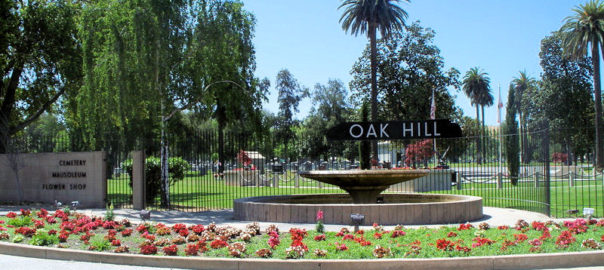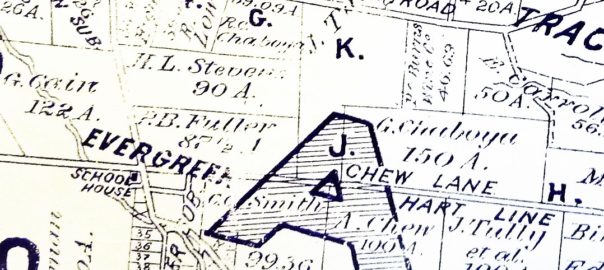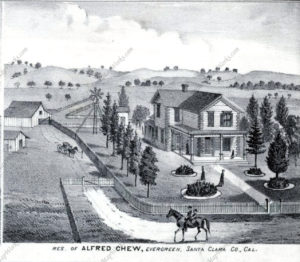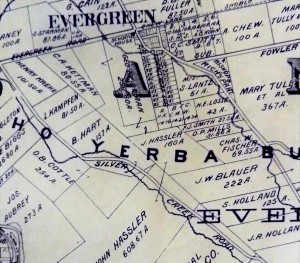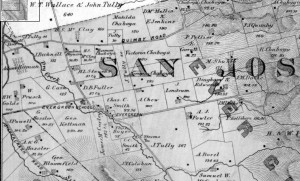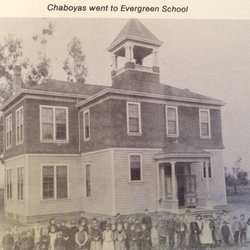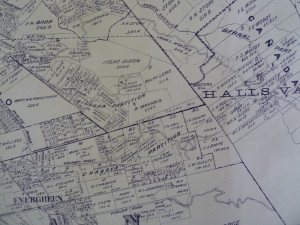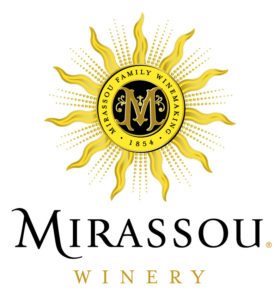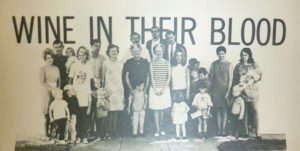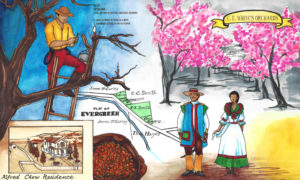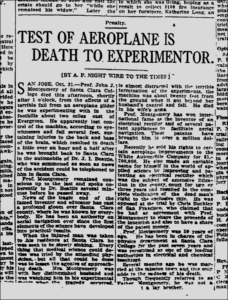 So often all I have to go on as a portrait or physical evidence for my Evergreen historical figures are obituaries and/or gravestones. The first person sources have moved away or passed away. Strangely enough, you can tell a lot about people by their headstones. Actually, you find out the legacy the person left behind by what their family are able to provide them for the afterlife.
So often all I have to go on as a portrait or physical evidence for my Evergreen historical figures are obituaries and/or gravestones. The first person sources have moved away or passed away. Strangely enough, you can tell a lot about people by their headstones. Actually, you find out the legacy the person left behind by what their family are able to provide them for the afterlife.
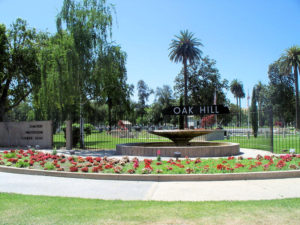 San Jose, the oldest Californian secular development, also has the oldest “secular cemetery”. Try saying that 5 times fast. Oak Hill’s 32 acre burial ground would become the final resting place for many pioneers and historic figures in Santa Clara County’s infancy and adolescence. I drove around and recognized a lot of street names like Curtner, Angew, Reed, Quimby and others. Noticables like San Jose’s first Mayor, Joseph Belden, T. S. Montgomery and Donner Party were buried here.
San Jose, the oldest Californian secular development, also has the oldest “secular cemetery”. Try saying that 5 times fast. Oak Hill’s 32 acre burial ground would become the final resting place for many pioneers and historic figures in Santa Clara County’s infancy and adolescence. I drove around and recognized a lot of street names like Curtner, Angew, Reed, Quimby and others. Noticables like San Jose’s first Mayor, Joseph Belden, T. S. Montgomery and Donner Party were buried here.
If you’re creeped out by quiet, open spaces, cemeteries or death in general, all which I am, I totally suggest what I did. I went to Oak Hill Cemetery on Father’s Day, when there were plenty of people around. In fact, it’s a hot spot on certain holidays. Don’t worry. You’ll feel there might be enough living people to even out your creepy crawlies. These days, the scent of flowers and incense can be detected amongst laughing, music and family. It was quite a warm place. I felt very free to wonder around. You don’t need to wonder, however. You have me being nosey on your behalf. If you’d like to go on an unscary tour, I’ll be your tour guide.
First of all, cemeteries like neighborhoods and cities would be developed in a predictably chronological fashion. This may not mean much when you first get there, though. The area between the Curtner Avenue Entrance and Monterey Road Entrance to the North and those roads’ intersection would be planted first. Certain families, tribes or ethnicities would cluster in certain lawns. Roads would occur through the burial ground, separating these clusters and the earliest as well as most prominent characters would end up along the path.
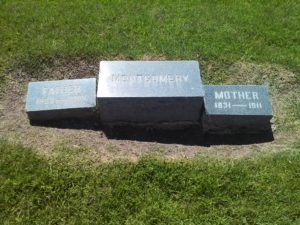
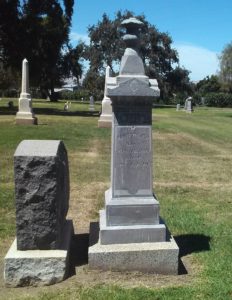 Secondly, not all gravesites are created equal. The wealthy would have larger headstones, build monuments or encapsulate their family plot. There were beautiful headstones I might just photograph for their sculptural and artistic value. You can take in a lot of information visually. In fact, when cruising slowly through the paths, names clear enough to read from your car are simple richer or more famous people.
Secondly, not all gravesites are created equal. The wealthy would have larger headstones, build monuments or encapsulate their family plot. There were beautiful headstones I might just photograph for their sculptural and artistic value. You can take in a lot of information visually. In fact, when cruising slowly through the paths, names clear enough to read from your car are simple richer or more famous people.
Whether is was ornate crosses, angels, obelisk, columns or awesome granite, these are their own communication. They indicate faith, job, stature, origin and impact. A cross would symbolize this person’s connection with their religion, and the style of cross might say they were Irish, Catholic or Episcopalian. An angel might communicate that this person was very kind or had a direct positive effect on others. A Corinthian column is someone who was stoic and politically minded. You’ll have a bust of the individual if there are revered. The subject matter says a lot about the person.
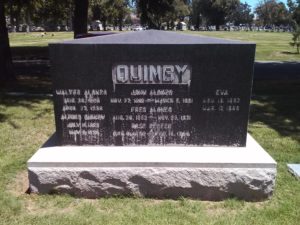 San Jose’s early Mayor, John Alonzo Quimby is at Oak Hill. Here spelt Quinby, the lawmaker was probably a Quaker and opted for a shared fairly unadorned headstone. It is large and a beautiful block of granite stone. J. A. Quimby is featured prominently in the middle of the arrangement, surrounded by his loved ones. The Quimby’s was probably a close knit family, as well as one with modesty. This was towards the front of the 32 acres of cemetery. Mayor Quimby was a very well respected man at the time and given the visibility belonging to important folks.
San Jose’s early Mayor, John Alonzo Quimby is at Oak Hill. Here spelt Quinby, the lawmaker was probably a Quaker and opted for a shared fairly unadorned headstone. It is large and a beautiful block of granite stone. J. A. Quimby is featured prominently in the middle of the arrangement, surrounded by his loved ones. The Quimby’s was probably a close knit family, as well as one with modesty. This was towards the front of the 32 acres of cemetery. Mayor Quimby was a very well respected man at the time and given the visibility belonging to important folks.
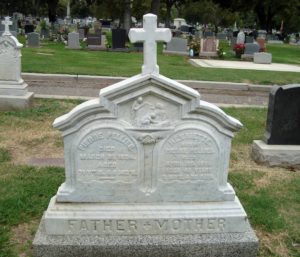
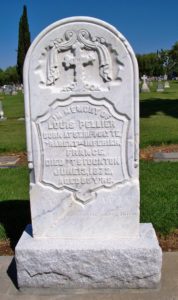 Let’s contrast that with our wealthy French family, the Pelliers. Not all of them would end up in Oak Hill Cemetery. Louis, both the brother of Perrier and his son, would end up at the Catholic Cavalry Cemetery, where the rest of the whose who and pioneers would end up. These resting places are very orante or fancy, just like the French.
Let’s contrast that with our wealthy French family, the Pelliers. Not all of them would end up in Oak Hill Cemetery. Louis, both the brother of Perrier and his son, would end up at the Catholic Cavalry Cemetery, where the rest of the whose who and pioneers would end up. These resting places are very orante or fancy, just like the French.
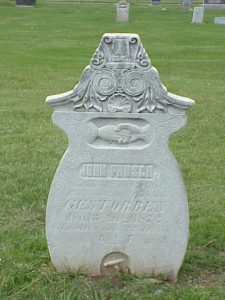 The Germans would also have their own style. Hands shaking was a popular motif. The Prusch Family of Evergreen and it’s surrounding area would have something that communicates their German roots. I think it’s very similar to tapestry from the Dark Ages.
The Germans would also have their own style. Hands shaking was a popular motif. The Prusch Family of Evergreen and it’s surrounding area would have something that communicates their German roots. I think it’s very similar to tapestry from the Dark Ages.
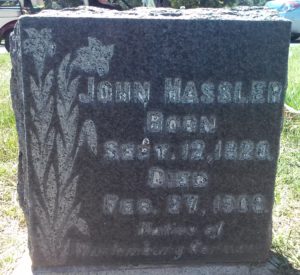 The German immigrant and wealthy farmer from Evergreen, John Hassler, would use the symbol of the lily on his gravestone, indicating a fondness for the Bible, or Word of God. His headstone is minimalistic yet bold. This would indicate a value placed on the simple life. That makes sense. Beyond fortuitous land dealings in Evergreen, John Hassler was a simple farmer and his family continued that tradition. The Hassler’s Patriach wouldn’t need any help holding down this beautiful granite stone. But don’t worry. Plenty of his loved ones surround him with simpler plots.
The German immigrant and wealthy farmer from Evergreen, John Hassler, would use the symbol of the lily on his gravestone, indicating a fondness for the Bible, or Word of God. His headstone is minimalistic yet bold. This would indicate a value placed on the simple life. That makes sense. Beyond fortuitous land dealings in Evergreen, John Hassler was a simple farmer and his family continued that tradition. The Hassler’s Patriach wouldn’t need any help holding down this beautiful granite stone. But don’t worry. Plenty of his loved ones surround him with simpler plots.
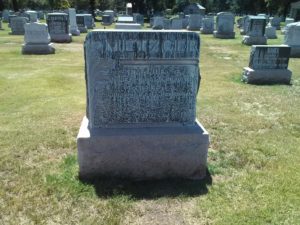
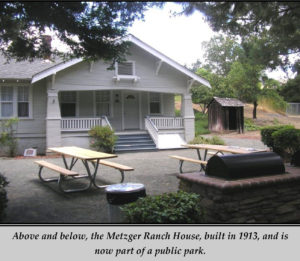 Mr. and Mrs. Metzger, also German, ended up together in the end, even though fifty years would separate their passing. The farmer’s headstone if a block of granite with a nouveau classical element, clearly foliage. It’s similar to the family’s home and it’s most likely Mrs. Metzger’s taste guiding the decisions here. What separates this gravestone from the above Hassler’s is a couple years and new technologies for cutting. This means the styles have changed and the gravestones do the same this. This comes from San Jose’s Victorian period. The stone says a lot.
Mr. and Mrs. Metzger, also German, ended up together in the end, even though fifty years would separate their passing. The farmer’s headstone if a block of granite with a nouveau classical element, clearly foliage. It’s similar to the family’s home and it’s most likely Mrs. Metzger’s taste guiding the decisions here. What separates this gravestone from the above Hassler’s is a couple years and new technologies for cutting. This means the styles have changed and the gravestones do the same this. This comes from San Jose’s Victorian period. The stone says a lot.
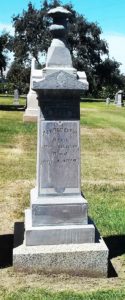 People who had been in the United States for some time, like Alfred Chew, would opt for something very American as a memorial. Native of Ohio, civil servant Chew’s headstone would tell us he was a stable man, because of its height and shape. The triangular front mimics the architecture of government buildings. All it’s missing is columns, but it itself is a column which speaks to his stability and legacy. We can also see that Alfred Chew was a farmer with flowering accents.
People who had been in the United States for some time, like Alfred Chew, would opt for something very American as a memorial. Native of Ohio, civil servant Chew’s headstone would tell us he was a stable man, because of its height and shape. The triangular front mimics the architecture of government buildings. All it’s missing is columns, but it itself is a column which speaks to his stability and legacy. We can also see that Alfred Chew was a farmer with flowering accents.
Now, Evergreen’s neighbors wouldn’t end up anywhere near each other. Certain neighbors would be close by or located in the same lawn, but I believe that has more to do with the timing of their death. It was not the closeness I thought there would be based on pockets of German or French immigrants in Evergreen or everyone’s reports of a close knit community. The experience was tremendous, however. The next time I visit, I’m going to bring a list of names of people supposedly buried here and get a little help from the desk. I’m going to make a list and a map so you don’t have to wonder around aimlessly. For me these headstone told me so much about how these folks were remembered and the time they grew up in.
